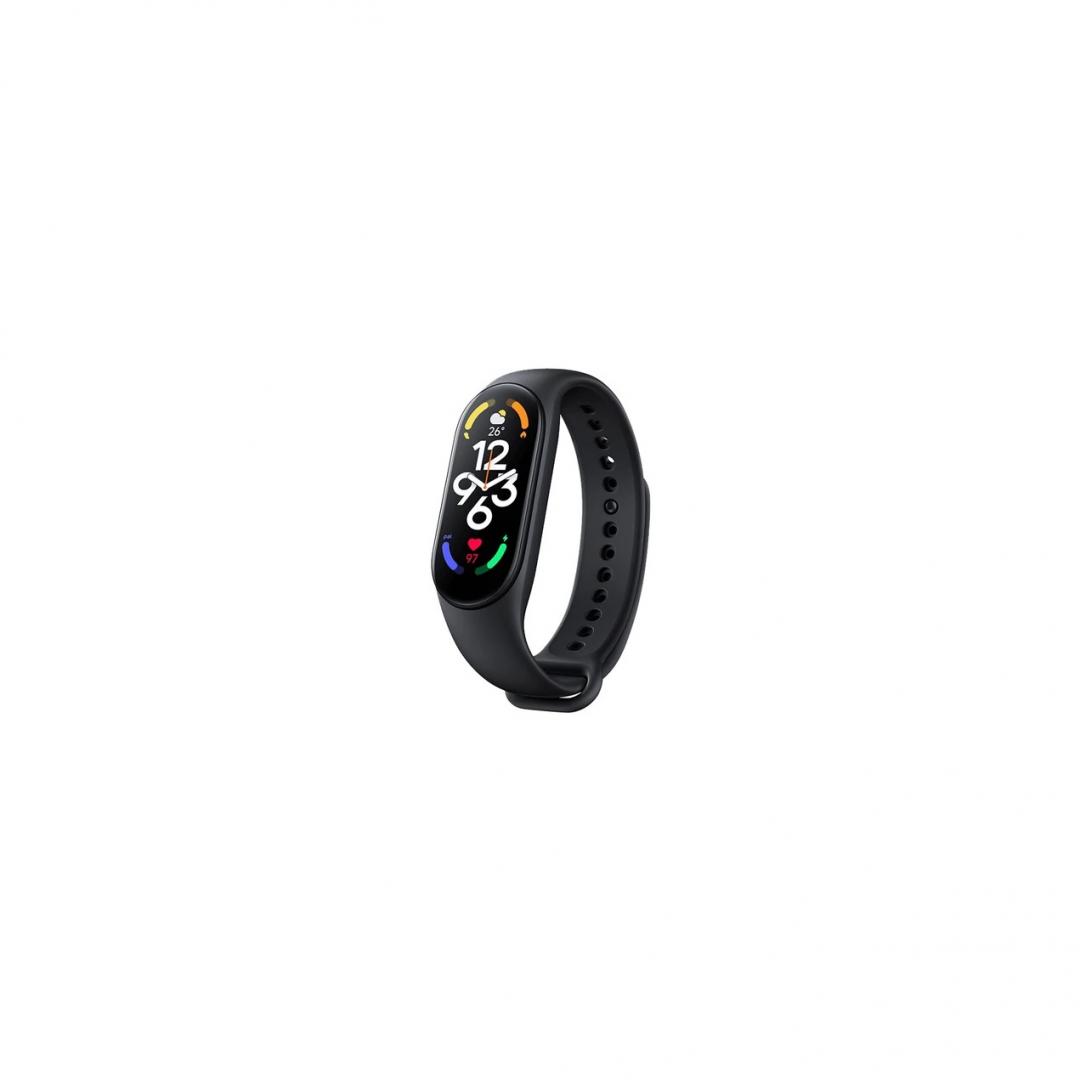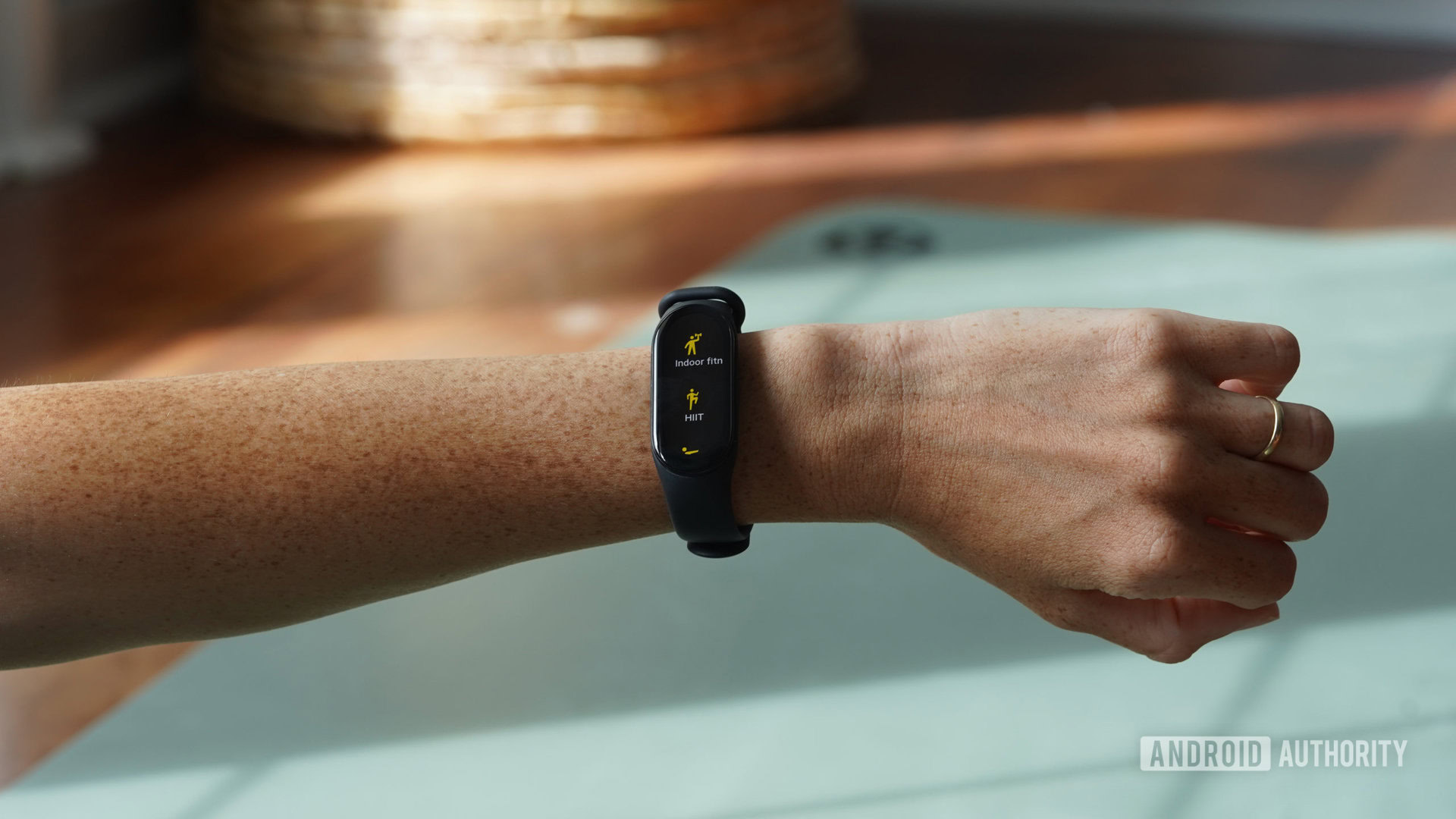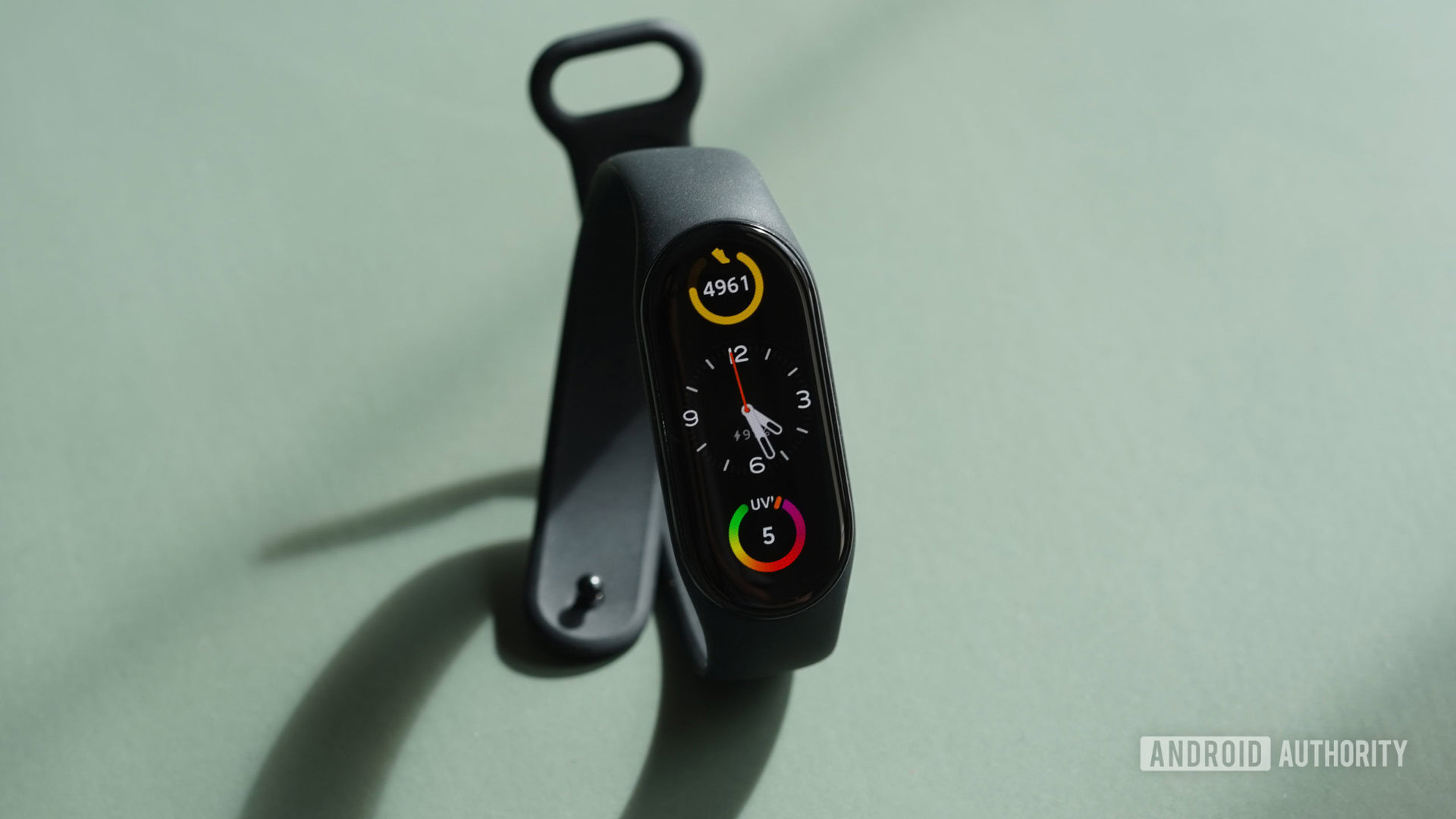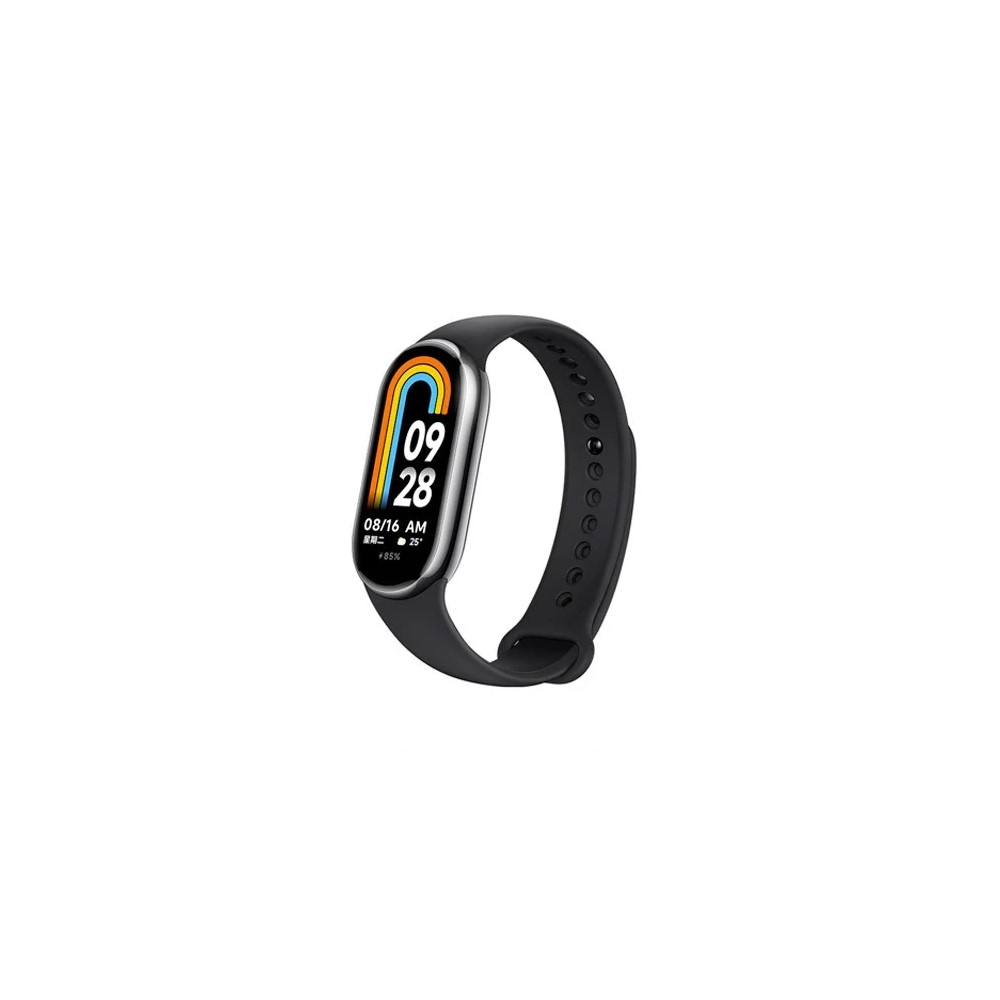Affiliate links on Android Authority may earn us a commission. Learn more.
Xiaomi Mi Band 7 vs Mi Band 6: Which cheap tracker should you buy?




Newer doesn’t necessarily mean better, especially when it comes to new wearables. While no longer the company’s latest and greatest, the Xiaomi Mi Band 7 still boasts many positives. But how does it stack up against older models, like the Mi Band 6? Find out in our Xiaomi Mi Band 7 vs Mi Band 6 comparison for a look at two of the best fitness trackers for users on a budget.
Design and features
- Xiaomi stretched the Mi Band 7’s screen to 1.62 inches without sacrificing pixel density.
- Its always-on display mode adds to the new tracker’s usefulness.
- The Mi Band 7 includes more colors, clock faces, and an improved UI over its predecessor.
While we can’t say the same for the Mi Band 8, Xiaomi has resisted the urge to switch up the established Mi Band design with the seventh iteration, and it was a good decision in our book. The biggest draw of the Mi Band series is its simplicity, and the Mi Band 7 demonstrates this.
The Xiaomi Mi Band 7 packs a 1.62-inch AMOLED display, up from the Mi Band 6’s 1.56-inch screen. It may not seem a huge improvement, but a larger viewing area for important info is always welcome and valuable when only a glance will do. The newer display also hits 500 nits maximum brightness, a minor improvement over the Mi Band 6’s 450 nits.
Despite its size increase, the most noticeable display improvement comes from an always-on mode. The long-awaited feature will allow users to sneak peeks at the time and other important information without tapping the screen. The Mi Band 7 also gains a reworked UI with an always-on mode and an upgraded screen. Icons and animations are refreshed, while the data presented on screen takes advantage of the AMOLED screen’s contrast ratio. On top of this, you’re also getting more than 100 additional customizable clock faces with nifty MIUI 13-inspired designs.
Xiaomi has resisted the urge to switch up the established Mi Band design with the seventh iteration, and it was a good decision in our book.
Beyond these changes, it’s tough to tell the Mi Band 7 and Mi Band 6 apart from a distance. Both feature a pill-shaped central tracker mounted snugly into a TPU band. The former arrives with at least six color options, with new camouflage and fluorescent options. For those seeking a wider array of stock band options, the Mi Band 7 does have a leg up here.
You will notice a considerable change in the battery capacity column, though. The Mi Band 7 includes a 180mAh battery, up from the Mi Band 6’s 125mAh cell. Xiaomi believes the new band will typically last 15 days between charges or nine days for more enthusiastic users. The Mi Band 6 was advertised to have a two-week battery life. This battery bump is probably necessary. The Mi Band 7’s new features could steadily drain its battery in the background, and that’s exactly what we discovered in our review. With all the advanced new features switched on, we couldn’t go beyond a week without charging the band. Notably, the big battery drain seems to be the always-on display, but you likely wouldn’t want to switch off a feature that sets the Mi Band 7 apart from its siblings.
This higher battery demand is also a normal thing for modern Mi Bands. During our Mi Band 6 review, we also found the tracker fell well short of Xiaomi’s quoted battery life target.
Fitness and health tracking

- The Xiaomi Mi Band 6 falls well short in health and fitness features.
- The Mi Band 7 has SpO2 alerts, training metrics like VO2 max and training load, and more sport tracking modes.
- Onboard GPS is a no-show on the newer tracker.
Design should come second to a fitness tracker’s health kit, so how do the Mi Band 6 and Mi Band 7 compare? First, the two bands share many features, including heart rate monitoring, sleep tracking, female health monitoring, and stress tracking. PAI, or Personal Activity Intelligence metrics, is standard across both bands.
While the Mi Band 6 saw loads of upgrades over its predecessor, the Mi Band 7 seemingly wants to be taken seriously by avid gym-goers and runners. The SpO2 sensor returns but continuously monitors a user’s blood oxygen level, sounding an alarm if it dips below 90%. It’s a great feature, especially if users don’t want to monitor this metric actively. The Xiaomi Mi Band 6’s SpO2 sensor only continuously monitors levels during sleep, so the Mi Band 7 is a welcome step up.
More serious trainers will find four additional data fields on the Mi Band 7 to analyze their performance.
More serious trainers will find four additional data fields on the Mi Band 7 to analyze their performance. These include VO2 max, aerobic/anaerobic training advice that helps users understand how hard to push their heart to burn fat or build muscle, and recovery time. Training load is also calculated using a seven-day excess post-exercise oxygen consumption, or EPOC — a standard used by the likes of Garmin. This metric should give users more insight into how their recent exercise has impacted their general fitness. You’d usually have to fork out for a more expensive training-orientated watch to gain insight into these metrics, so seeing these on a budget tracker is impressive.
Beyond these serious training features, the Mi Band 7 caters to casual users. The band now packs 120 sports modes, up from the 30 offered by the Mi Band 6. Will you use all 120 modes? Probably not, but variety is the spice of life.
Where older Mi Band models may still excel
- If you value battery endurance, you might want to hang on to your older Mi Band 5 or Mi Band 4.
- The Xiaomi Mi Band 7 still doesn’t fix the Mi Band 6’s more pressing issues, like the lack of built-in GPS.
We’ve spoken extensively of the Xiaomi Mi Band 7 versus the Mi Band 6, but how does the tracker contend with older models? Well, it still misses a few features its predecessors lacked.
One of the biggest omissions on the Mi Band 7 is onboard GPS. A staple on pricier fitness trackers and smartwatches, built-in GPS would allow Mi Band 7 users to leave their smartphones at home to track their runs, bike rides, and hikes. You’ll need to buy the more expensive smartwatch-like Smart Band 7 Pro for the privilege. Sure, onboard GPS would’ve depleted the Mi Band 7’s battery life even quicker, but it would’ve also made it more appealing to the serious athletes it wants to court. It would also help Xiaomi sell the band’s more advanced training metrics.
The Mi Band 7 doesn't have the worst battery life stats but don't upgrade if you want your tracker to last longer.
Again, it’s worth bringing up the Mi Band 7’s battery consumption, too. Despite its larger battery size, the Mi Band 7 eats through its battery faster than the older Mi Band 5. This tracker boasted a two-week battery life claim, and its predecessor, the Mi Band 4, could last nearly a month between charges. The Mi Band 7 doesn’t have the worst battery life stats but don’t upgrade if you want your tracker to last longer.
Specs
| Xiaomi Mi Band 6 | Xiaomi Mi Band 7 | |
|---|---|---|
Display | Xiaomi Mi Band 6 1.56-inch AMOLED Tempered glass with anti-fingerprint coating 152 x 486 resolution 326ppi Up to 450 nits 60+ band displays | Xiaomi Mi Band 7 1.62-inch AMOLED Always-on display mode 2.5D tempered glass 192 x 490 resolution Up to 500 nits 100+ band displays |
Sensors | Xiaomi Mi Band 6 PPG heart rate sensor 3-axis accelerometer sensor 3-axis gyroscope sensor SpO2 sensor Connected GPS | Xiaomi Mi Band 7 PPG heart rate sensor 3-axis accelerometer sensor 3-axis gyroscope sensor SpO2 sensor Connected GPS |
Battery | Xiaomi Mi Band 6 125mAh 14 day promised battery life | Xiaomi Mi Band 7 180mAh 15 day typical battery life 9 days with heavy use |
Connectivity | Xiaomi Mi Band 6 Bluetooth 5.0 | Xiaomi Mi Band 7 Bluetooth 5.2 |
Tracking and other features | Xiaomi Mi Band 6 30 fitness modes 6 auto detection modes SpO2 tracking Sleep tracking Breathing exercises Stress monitoring Female health tracking PAI (Personal Activity Intelligence) Idle alerts Camera remote shutter NFC (limited to Chinese NFC model) | Xiaomi Mi Band 7 120 fitness modes Continuous SpO2 tracking with low blood oxygen alerts Sleep tracking Breathing exercises Stress monitoring Female health tracking PAI (Personal Activity Intelligence) VO2 Max calculations Aerobic/anaerobic training alerts Recovery time Training load Idle alerts Camera remote shutter NFC (limited to NFC model) |
Water resistance | Xiaomi Mi Band 6 5ATM | Xiaomi Mi Band 7 5ATM |
App compatibility | Xiaomi Mi Band 6 Mi Fitness app Zepp Life app | Xiaomi Mi Band 7 Mi Fitness app Zepp Life app |
Charging method | Xiaomi Mi Band 6 Magnetic charging | Xiaomi Mi Band 7 Magnetic charging |
Supported devices | Xiaomi Mi Band 6 Android 5.0 and above iOS 10 and above | Xiaomi Mi Band 7 Android 6.0 and above iOS 10 and above |
Dimensions | Xiaomi Mi Band 6 47.4 x 18.6 x 12.7mm Strap: 155 - 219mm | Xiaomi Mi Band 7 46.5 x 20.7 x 12.25mm |
Colors | Xiaomi Mi Band 6 Black, Orange, Yellow, Olive, Ivory, Blue | Xiaomi Mi Band 7 Black, Blue, Orange, Pink, White, Dark Green, Fluorescent Orange, Fluorescent Green, Camouflage Blue, Camouflage Green. |
Xiaomi Mi Band 7 vs Mi Band 6: Which should you buy?

- The Xiaomi Mi Band 6 is no longer worth buying. However, those who already own one should think twice about upgrading.
- Are you seeking a tracker with advanced training stats and a larger screen with an always-on mode? Consider the Xiaomi Mi Band 7.
- Those seeking a Xiaomi tracker with GPS must choose the pricier Smart Band 7 Pro or Smart Band 8 Pro.
The Xiaomi Mi Band 7 is pricier than the Mi Band 6, but that isn’t an immediate dealbreaker. You can find the Band 7 on Amazon for around $50. However, that steeper asking price is worth considering if you want a larger screen, more advanced training monitoring data, and a larger battery. The Mi Band 7 makes the most sense for newcomers who don’t appreciate the Mi Band 8 redesign.
If you already own a Mi Band 6 or older Mi Band, you may want to think twice about upgrading. You may not need the additional training features or prefer the longer battery life offered by older models.
Of course, if you need onboard GPS on your Mi Band, you’ll have to look at the Smart Band 7 Pro ($89 at Amazon) or Smart Band 8 Pro. Both devices aren’t true Mi Band models but feature larger screens, bigger batteries, and higher asking prices.
Finally, as mentioned, the Mi Band 8 is now available, too, but it’s a stark departure from the long-standing Mi Band formula. More smartwatch-like than ever, the Mi Band 8 boasts straps that fasten to either end of a central tracker like a watch.



Overall, it’s tough to recommend the Mi Band 6 over the Mi Band 7, especially considering the former’s age. That said, if you own a Mi Band 6, there’s no genuine reason to upgrade to the newer tracker if you don’t desire its minor upgrades.
Which Xiaomi Mi Band model do you prefer?
That’s it for our Xiaomi Mi Band 7 vs Mi Band 6 head-to-head. But what do you think of the Mi Band 7? Is it worth getting over the Mi Band 6? Let us know by voting in the poll above.
FAQ
The Xiaomi Mi Band 7 is worth buying if you value its upgraded screen, larger battery, and more intuitive health tracking features, but it may not be worth upgrading from the Mi Band 6 just yet.
Xiaomi launched two Mi Band 7 models in China. One includes NFC, while the other does not. It’s unclear which model will launch globally.
The Xiaomi Mi Band 7 features connected GPS capabilities, but this relies on the companion phone’s GPS.